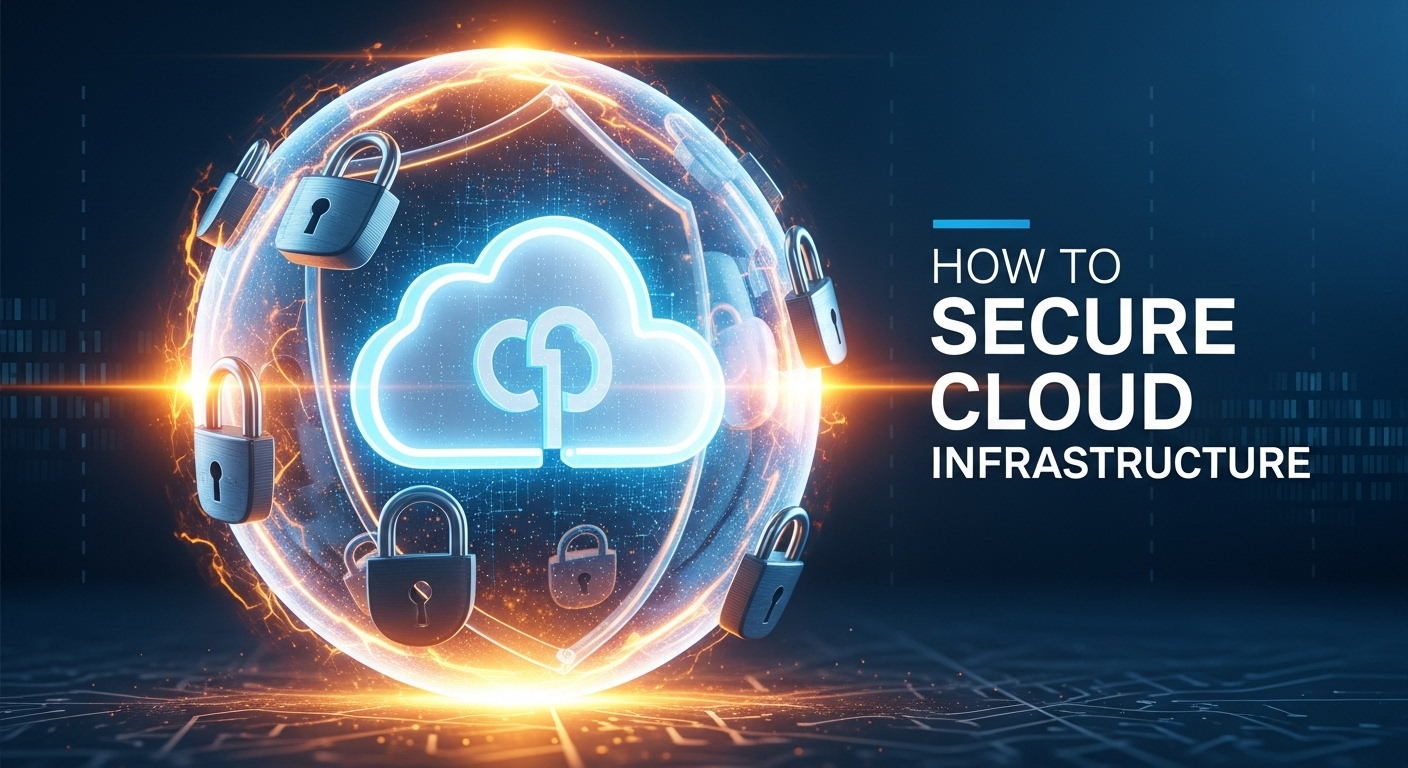Cloud infrastructure security has become the cornerstone of modern digital business operations. As organizations increasingly migrate their critical systems to cloud environments, understanding how to implement robust security measures isn’t just recommended—it’s absolutely essential for survival in today’s threat landscape.
Understanding Your Cloud Security Foundation
Before diving into specific strategies, let’s establish what you’re actually protecting. What comes to mind when you think about the most valuable assets in your cloud environment? Consider not just your data, but also your applications, user access points, and network configurations.
Your cloud infrastructure security approach should address three fundamental layers: the physical infrastructure (managed by your cloud provider), the platform services you utilize, and the applications and data you’re responsible for securing.
Strategy 1: Implement Zero Trust Architecture
The traditional “trust but verify” model is dead in cloud infrastructure security. Zero Trust operates on the principle that no user, device, or network component should be trusted by default, regardless of their location or previous authentication status.
Key Components of Zero Trust Implementation:
- Identity Verification: Every user and device must be authenticated and authorized before accessing any resources. This involves implementing multi-factor authentication (MFA) across all access points.
- Least Privilege Access: Users receive only the minimum permissions necessary to perform their roles. This significantly reduces your attack surface and limits potential damage from compromised accounts.
- Continuous Monitoring: Real-time analysis of user behavior, network traffic, and system activities helps detect anomalies that could indicate security threats.
Think about your current access management system. Are you granting broad permissions “just in case,” or are you being surgical about what each user actually needs?
Strategy 2: Master Cloud-Native Security Tools
Cloud infrastructure security requires leveraging the native security capabilities of your chosen platform. Each major cloud provider offers comprehensive security services that integrate seamlessly with their infrastructure.
Amazon Web Services (AWS) Security Services:
- AWS Identity and Access Management (IAM) for precise access control
- AWS CloudTrail for comprehensive audit logging
- Amazon GuardDuty for threat detection and continuous monitoring
- AWS Security Hub for centralized security findings management
Microsoft Azure Security Features:
- Azure Active Directory for identity management
- Azure Security Center for unified security management
- Azure Key Vault for secrets management
- Azure Sentinel for security information and event management (SIEM)
Google Cloud Platform (GCP) Security Tools:
- Cloud Identity and Access Management for granular permissions
- Cloud Security Command Center for asset discovery and vulnerability assessment
- Cloud Key Management Service for encryption key management
- Chronicle for security analytics and threat hunting
How familiar are you with your cloud provider’s native security offerings? These tools are often more effective than third-party solutions because they’re designed specifically for the platform’s architecture.
Strategy 3: Establish Comprehensive Data Encryption
Data encryption in cloud infrastructure security operates at multiple levels, each serving a specific protection purpose.
- Encryption at Rest: Your stored data should be encrypted using industry-standard algorithms like AES-256. Most cloud providers offer automatic encryption for their storage services, but you should verify that it’s enabled and properly configured.
- Encryption in Transit: All data moving between your systems, users, and cloud services must be encrypted using protocols like TLS 1.3. This prevents interception during transmission.
- Encryption in Use: Advanced encryption technologies now allow you to process encrypted data without decrypting it first, providing an additional layer of security for sensitive operations.
| Encryption Type | Use Case | Key Management |
|---|---|---|
| At Rest | Stored databases, files, backups | Cloud-managed or customer-managed keys |
| In Transit | API calls, data transfers, user sessions | TLS/SSL certificates |
| In Use | Processing sensitive data | Specialized hardware security modules |
Consider this: What level of encryption is appropriate for your most sensitive data? The answer should guide your entire cloud infrastructure security strategy.
Strategy 4: Implement Robust Network Security Controls
Network security in cloud environments requires a different approach than traditional on-premises networks. You’re working with virtual networks, software-defined perimeters, and distributed resources.
- Virtual Private Clouds (VPCs): Create isolated network environments for different applications and data sensitivity levels. This segmentation limits the potential impact of security breaches.
- Network Access Control Lists (NACLs) and Security Groups: These act as virtual firewalls, controlling traffic flow at both the subnet and instance levels. Configure them with the principle of least privilege—deny all traffic by default and explicitly allow only necessary communications.
- Web Application Firewalls (WAFs): Deploy WAFs to filter HTTP/HTTPS traffic to your web applications, blocking common attack patterns like SQL injection and cross-site scripting.
- Think about your network architecture: Are you creating clear boundaries between different security zones? How are you monitoring and controlling the traffic flowing through these boundaries?
Strategy 5: Establish Continuous Monitoring and Incident Response
Cloud infrastructure security isn’t a “set it and forget it” endeavor. You need continuous visibility into your environment and the ability to respond quickly to threats.
Security Information and Event Management (SIEM)
Implement a SIEM solution that aggregates logs and events from across your cloud infrastructure. This provides centralized monitoring and helps identify patterns that might indicate security incidents.
Automated Threat Detection
Leverage machine learning-based tools that can identify unusual behavior patterns, such as:
- Unusual login locations or times
- Abnormal data access patterns
- Unexpected network traffic flows
- Suspicious API usage
Incident Response Planning
Develop and regularly test incident response procedures specifically for cloud environments. This should include:
- Clear escalation procedures
- Communication plans
- Recovery processes
- Lessons learned documentation
How quickly can your team detect and respond to a potential security incident? Industry research suggests that faster detection and response significantly reduce the impact of security breaches.
Strategy 6: Secure Your DevOps Pipeline
Modern cloud infrastructure security must address the entire development and deployment lifecycle. This concept, known as DevSecOps, integrates security practices throughout your CI/CD pipeline.
Infrastructure as Code (IaC) Security
When you define your infrastructure through code, you can apply the same security principles used in application development:
- Version control for all infrastructure definitions
- Security testing of infrastructure templates
- Automated compliance checking
- Peer review processes for infrastructure changes
Container Security
If you’re using containerized applications, implement container-specific security measures:
- Scan container images for vulnerabilities before deployment
- Use minimal base images to reduce attack surface
- Implement runtime security monitoring for containers
- Manage secrets and configuration securely
Secrets Management
Never hardcode sensitive information like passwords, API keys, or certificates in your code or configuration files. Use dedicated secrets management services provided by your cloud platform or third-party solutions.
What security checks are currently built into your development and deployment processes? The earlier you catch security issues, the less expensive they are to fix.
Strategy 7: Maintain Compliance and Governance
Cloud infrastructure security must align with regulatory requirements and organizational policies. This requires ongoing governance and compliance monitoring.
Regulatory Compliance Frameworks
Different industries have specific compliance requirements:
- HIPAA for healthcare organizations
- PCI DSS for organizations handling credit card data
- GDPR for organizations processing EU citizen data
- SOX for publicly traded companies
Cloud Security Posture Management (CSPM)
Implement CSPM tools to continuously assess your cloud configuration against security best practices and compliance requirements. These tools can automatically identify misconfigurations and provide remediation guidance.
Regular Security Assessments
Conduct periodic security assessments, including:
- Vulnerability assessments of your cloud resources
- Penetration testing of your applications and infrastructure
- Security architecture reviews
- Third-party security audits
Implementation Roadmap
Implementing comprehensive cloud infrastructure security can seem overwhelming. Here’s a practical approach to get started:
Phase 1 (Months 1-2): Foundation
- Implement multi-factor authentication across all systems
- Enable logging and monitoring on all cloud resources
- Conduct an inventory of all cloud assets and their current security status
Phase 2 (Months 3-4): Core Security Controls
- Deploy network security controls (VPCs, security groups, firewalls)
- Implement encryption for data at rest and in transit
- Establish identity and access management policies
Phase 3 (Months 5-6): Advanced Capabilities
- Deploy automated threat detection tools
- Implement DevSecOps practices in your development pipeline
- Establish incident response procedures
Phase 4 (Months 7-8): Optimization and Compliance
- Fine-tune security controls based on monitoring data
- Implement compliance monitoring tools
- Conduct security assessments and address findings
Measuring Success
How will you know if your cloud infrastructure security efforts are effective? Establish key performance indicators (KPIs) such as:
- Mean time to detect (MTTD) security incidents
- Mean time to respond (MTTR) to security incidents
- Number of security misconfigurations detected and remediated
- Compliance audit results
- Security training completion rates
Looking Forward
Cloud infrastructure security continues to evolve rapidly. Emerging trends include serverless security, edge computing protection, and AI-powered threat detection. Stay informed about these developments and be prepared to adapt your security strategy accordingly.
The investment in robust cloud infrastructure security pays dividends through reduced risk, improved compliance posture, and increased customer trust. By implementing these seven strategies systematically and maintaining a continuous improvement mindset, you’ll build a security foundation that can adapt to evolving threats and business requirements.
Remember, cloud infrastructure security is not a destination but a journey. The threat landscape will continue to evolve, and your security measures must evolve with it. The key is to establish strong fundamentals and maintain the discipline to continuously improve your security posture.











